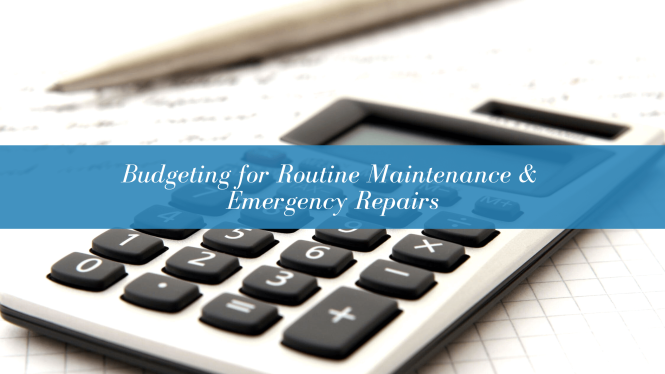

Secondhand ownership costs can significantly impact your budget, so understanding these expenses is key. This comprehensive guide breaks down the hidden costs of buying a used vehicle, helping you develop a realistic budget for maintenance and repairs.
Pre-Purchase Inspection: Uncovering Hidden Problems
Assessing the Vehicle’s Condition
A thorough pre-purchase inspection is essential for avoiding costly repairs down the line. A certified mechanic can assess the vehicle’s mechanical health, identifying potential issues such as worn-out components, electrical problems, or structural damage. Documentation of the inspection report will provide crucial evidence if problems arise after purchase. Ignoring this step can leave you with hefty repair bills and a frustrating ownership experience. It’s not just about preventing significant problems, but also identifying minor issues which, when overlooked, can escalate into significant expenditure. A proper inspection often reveals issues like worn brakes, failing suspension components, or questionable engine health, which can help you negotiate a better price or walk away if the car presents significant issues.
Financial Implications
Related Post : Used Car Buying Blunders: Avoiding Common Mistakes and Hidden Problems.
The cost of a pre-purchase inspection is a worthwhile investment for pre-owned vehicle buyers. It prevents unexpected expenses and allows you to negotiate the price effectively based on the vehicle’s true condition. A pre-purchase inspection report can be crucial in protecting your financial investment. It empowers you to make informed decisions about the value of the vehicle. This approach saves you from unnecessary expenditures and guarantees a smooth transition into ownership. Many mechanics offer transparent pricing structures, allowing you to budget accordingly.
Budgeting for Maintenance
Establishing a Routine Schedule
Routine maintenance, such as oil changes, tire rotations, and filter replacements, is crucial for maintaining a vehicle’s lifespan and performance. These scheduled maintenance tasks prevent potential breakdowns and ensure optimal performance. The frequency of these services depends on the vehicle’s make and model; therefore, always consult the owner’s manual or a mechanic for precise recommendations. Failing to follow these procedures can lead to premature wear and tear on critical parts and significant repair costs.
Repair Contingency Fund
An adequate repair contingency fund is essential to mitigate unexpected repair costs. This budget buffer will be helpful in case of emergencies or unexpected problems. Allocate a specific amount each month for potential maintenance or repairs. Regular savings can assist you in managing these inevitable costs. This approach ensures you’re prepared for unanticipated situations that might require immediate intervention, providing peace of mind to the owner.
Repair Costs: Understanding the Variances
Different Types of Repairs
Repair costs vary widely depending on the specific issue. Minor repairs such as a flat tire may only cost a few dollars, while more significant repairs can range from hundreds to thousands of dollars, especially if major components require replacement. For example, engine problems can involve costly parts and labor, while a simple brake pad replacement might cost only a few hundred dollars. Understanding the typical costs associated with various repairs, such as engine repairs, transmission problems, or electrical issues, is a key step in managing your finances responsibly. This knowledge enables you to make informed decisions about how to address different maintenance needs effectively.
Cost Factors
Several factors can influence repair costs, including the type of repair required, the vehicle’s age and mileage, and the location of the repair shop. Repair costs can also vary depending on the extent of the damage or the complexity of the repairs. The location can play a part as labor rates and parts costs may vary geographically. Understanding these factors helps you establish a realistic budget and anticipate potential expenses.
The Value of Preventive Maintenance
Maintaining Vehicle Condition
Preventive maintenance plays a significant role in minimizing future repair costs. Regularly servicing your vehicle can prevent minor issues from escalating into major problems. This proactive approach helps ensure that the vehicle is in optimal condition. Early intervention can help avoid significant repair bills by addressing problems in their earliest stages, reducing potential expenditure. Scheduling routine maintenance can help keep your vehicle running optimally, extending its lifespan, and minimizing future maintenance needs.
Regular Checkups
Regular checkups, such as fluid checks, component inspections, and tire pressure checks, should be part of your routine. These tasks allow you to quickly identify potential problems before they worsen. Consistency in these tasks allows for early issue resolution, reducing the likelihood of extensive or costly repairs. Regular servicing can extend the lifespan of your vehicle, preserving its worth and reducing your financial outlay in the long run. By adhering to a regular preventive maintenance schedule, you can save yourself from unexpected expenses and maintain the vehicle’s overall condition.
Pre-Owned Vehicle Research
Researching Specific Models
Thorough research about specific car models is a critical aspect of smart secondhand ownership. Researching typical maintenance and repair costs can provide insights into the vehicle’s potential expenses. This step provides you with a realistic idea of the potential expenses of owning a specific vehicle, allowing for better financial planning. A detailed understanding of potential maintenance issues helps to plan for these costs, allowing for proactive steps before they impact your budget significantly. This can be obtained through online forums or industry-specific websites that collect detailed information about various models and their typical repair needs.
Evaluating Market Trends
Staying updated on market trends for used vehicles helps you make informed decisions based on current pricing and maintenance needs. The market value of a specific make and model often reflects historical repair costs. Market trends help you understand the current pricing structure to aid in financial planning.
Factors influencing Repair Costs
Vehicle Age and Mileage
Older vehicles, with higher mileage, often incur higher repair costs due to increased wear and tear on components. This is a critical factor in pre-purchase inspections to assess maintenance needs effectively. The increased wear and tear on older vehicles results in more significant repair needs as opposed to newer vehicles.
Understanding Different Repair Shops
Researching Mechanic Options
Researching various mechanic options can lead to more cost-effective repairs. Comparing prices and services can significantly reduce maintenance costs. This aspect of planning provides a cost-effective way to manage the maintenance needs of a secondhand vehicle. Choosing shops with transparent pricing policies can lead to lower overall repair costs.
Insurance Implications
Understanding Coverage for Secondhand Vehicles
Understanding your vehicle insurance coverage is essential for planning. Certain types of maintenance may not be covered by insurance, and having this understanding will improve your cost-effective financial planning.
Negotiating Prices Wisely
Considering Condition and Maintenance
Knowing the typical maintenance costs of a vehicle model allows buyers to negotiate prices effectively. A vehicle with significant maintenance needs may require a lower price, which is critical to your overall financial planning and vehicle upkeep.
In conclusion, understanding the costs of secondhand ownership is crucial for responsible car buying. Careful budgeting for maintenance and repairs, along with thorough pre-purchase inspections, significantly reduces the financial burden. By prioritizing these steps, you can enjoy the benefits of a pre-owned vehicle without unexpected expenses. For a more in-depth analysis, consult automotive professionals or reliable online resources. To start your journey towards smart secondhand ownership, schedule a consultation with a trusted mechanic today!